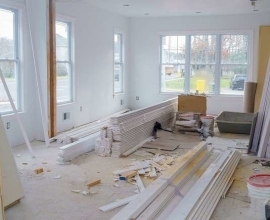Drying Building Materials After a Flood
If a building has been subjected to large amounts of water, either as the result of rain or a flood, it is imperative to take the necessary steps to remove the water and dry the structure as soon as possible. Additionally, you also need to make arrangements for repairs and restoration.
Health and safety issues should be addressed first. Ensure you and your family are safe, as well as anyone else in your home. Be sure the power to your home is turned off and check for gas leakage. If leakage is discovered, shut down the gas supply. Some flood waters may contain animal waste or sewage which can be potentially hazardous. It is therefore important to protect your hands, mouth and eyes during the clean up process using personal protective gear and disinfectants to wash hands, especially before eating. Professional help should be sought in cases where the home is too dangerous to enter.
Start by drying out the attic. If the insulation is wet remove it immediately. Remove soaked items including furniture, boxes, etc. and open the windows and air vents. This will increase the circulation of air flow and allow the restoration process to be more effective.
All ceilings should be inspected very carefully. Sheetrock and plaster can be very dangerous when wet. Remove all carpets that have been affected as well as linoleum and/or vinyl. Thoroughly wash the wood work in the house such as mantels, doors and stairs with disinfectant. Wash down floorboards that are covered in mud. If possible use weight or shoring during the drying and restoration process in order to minimize buckling of the floor boards. Keep in mind that the restoration process may take a significant amount of time.
In cases where the basement is flooded, drain the water surrounding the basement first. Then drain the water by two or three feet. Make a note of the water line and leave overnight while also making regular checks. If the water level rises, then wait until it is stable or decreases before pumping another two to three feet.
Furnishings that have been affected should be cleaned and treated as soon as possible before the drying and restoration process begins. This will also decrease the chances of long lasting damage.
Sufficient air circulation is fundamental to drying out the building effectively and efficiently. Do not use heaters or air-conditioners to speed up the process as this could cause further damage.
Eric Lachance is the heart of Royal Renovations Ottawa. Eric has more than 25 years of experience in the contracting and remodeling/renovation industry. All of his projects are completed professionally, meticulously and with great pride which is demonstrated by his superior craftsmanship.
Article Source: https://bit.ly/3yZX6Ug







